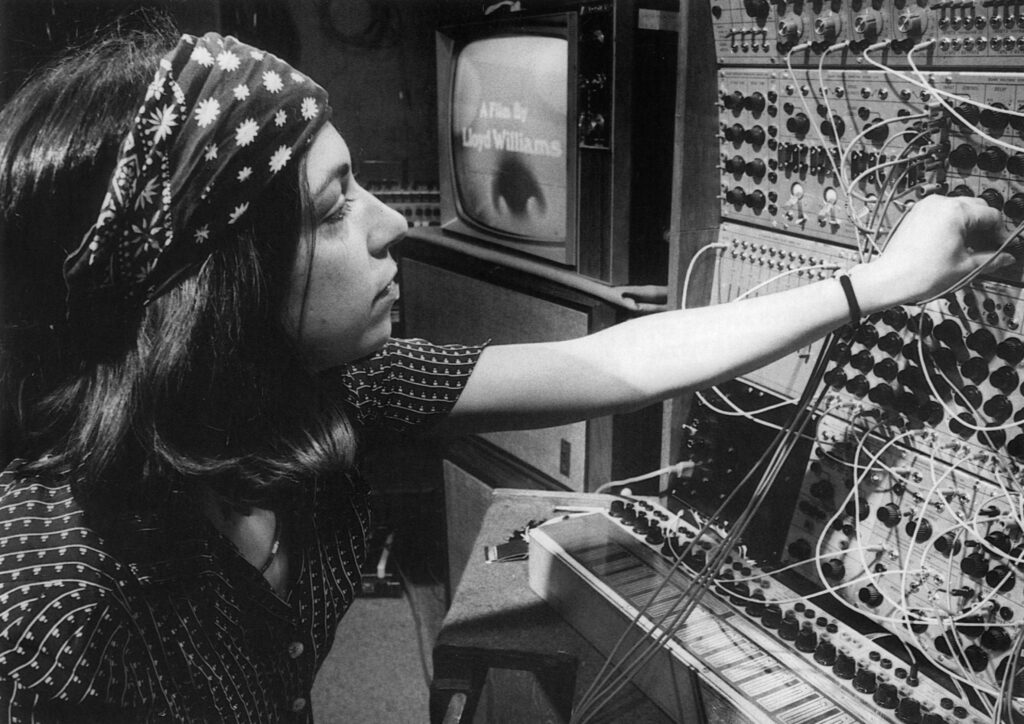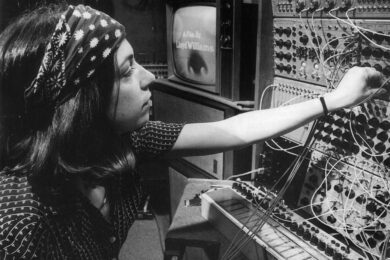When studying composition at Berkley, CA, in 1968, Suzanne Ciani met the person who would change her artistic life. Don Buchla was a contemporary of Robert Moog’s in the field of designing and building electronic musical instruments. But while Moog wanted to prove that he could assemble electronics to make them fit in with standard perceptions of what instruments should be – the Western piano keyboards, their use to ‘synthesize’ already standard sounds – Buchla was launching off into the unknown by designing a complicated modular electronic instrument system that represented a complete break with what had gone before.
In order to save money to buy her own Buchla 200, Ciani started working all hours in the inventor’s factory. After graduating from university she moved to New York with her ever expanding modular system and her desire to make progressive, left field music with it. She became friends with such figures as Philip Glass and Steve Reich, giving performances to the avant garde/minimalist elite. If anything she was too far ahead of the curve though and found it impossible to afford to live in the Big Apple with a crippling addiction to new technology.
She recognized that while most musicians in the late 60s/early 70s saw electronics as a fad (at best) and not on par with traditional forms of making music, she also knew that the commercial sector was hungry for the new sounds being generated. She founded her own company, Ciani/Musica, for the purposes of writing and recording jingles for the likes of Coca Cola, Energizer and Columbia Pictures. These commissions were lucrative and she would later describe it as being more like her "champagne and caviar than bread and butter" work.
It was this success in the commercial field that eventually allowed her the freedom she needed to finally explore a modestly successful career in making ambient new age music. Eventually she moved back to California, turning her back on electronic music after a period of illness and has spent the last 20 years writing and performing piano pieces.
Recently the spotlight has been shone once more on her work with modular electronic instruments back in the 1970s. Andy Votel of Finders Keepers compiled a selection of her electronic compositions on the Lixiviation compilation recently, so we decided the time was perfect to catch up with Suzanne.
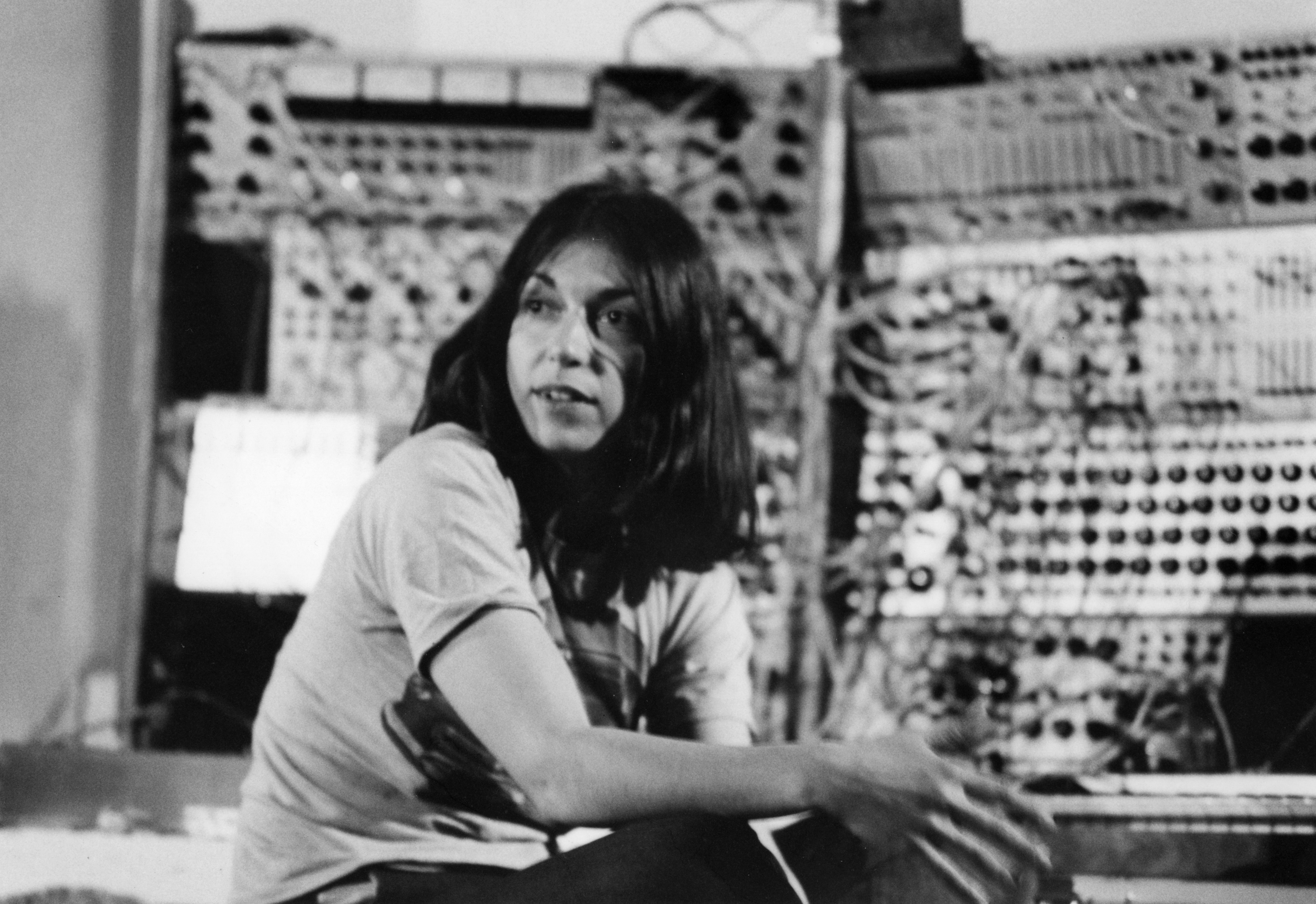
I’d like to ask you initially about the compilation Lixiviation on Finders Keepers. Andy Votel has a great ear for unearthing fascinating music that has fallen off the popular radar. Can you tell me how you got in touch with the label and how this compilation came about?
Suzanne Ciani: Andy contacted me a couple of years ago and planted the idea in my head. I decided to take a mining trip into my vaults and started transferring some early tapes [to digital]. I noticed that some of the tapes were destroyed. Once a tape is 30-years-old it might not play anymore. I panicked a little bit and spent the good part of a year digging tapes out and transferring them. Periodically I would send stuff over to Andy. He surprised me with the way he put things together and he does have an interesting ear. Even if it’s not the same ear I had when these pieces were recorded.
It has been a couple of decades since you last worked primarily in electronic music. Were you aware of the resurgence of interest in this field of music that’s happened over the last decade? Were you aware of people taking an increased interest in your music and that of the Radiophonic Workshop and people like Sam Spence?
SC: You know, I didn’t notice but that’s because I live at the top of a cliff by the side of the ocean in relative isolation. I’m in a different world now. I’m doing concerts on the piano. I was getting inklings of it though through younger folks who worked at my company (Ciani/Musica) in New York, because they were still working avidly in electronic music. Frankly I didn’t understand the interest that much. But what you’re talking about is more of a passion I think. Maybe the same passion that we had back then; this sense of aliveness in the area of electronic music – that there is something new and exciting happening in that field. It’s a renaissance and I think Europe has taken the lead in that. I know there are people in the United States who are equally as passionate [about electronic music] but I see more interest coming from Europe. Even when I was an electronics person I would be invited to play in the Netherlands at a big electronic music festival and we never had that here. My roots are European. My mom was German/English and my father was second generation Italian and I grew up with that European sensibility in Boston.
I think it’s interesting you see this as a European thing because I guess the history of electronic music has been a conversation back and forth across the Atlantic.
SC: That’s true but for me the Mesopotamia, as it were, of my interest in electronic music is Don Buchla who I met when I was studying at Berkley before ending up working at his factory. And that was a very special place. Don was a very special instrument designer and he had a vision that he is still expressing today. His idea was to make electronic instruments that could be used for live performances because they were compact enough for transporting between venues. And he has always designed appropriate interfaces for them. He showed me that the idea of playing a black and white keyboard with one of these instruments was completely ridiculous. It was inappropriate and had nothing to do with the way you would use an electronic instrument. So he made keyboards that are threaded, that have flat plates and the surface of the key can be made to respond to pressure or the amount of it that is covered. There was a new form of communication happening via his electronic instruments. He never used the word synthesizer.
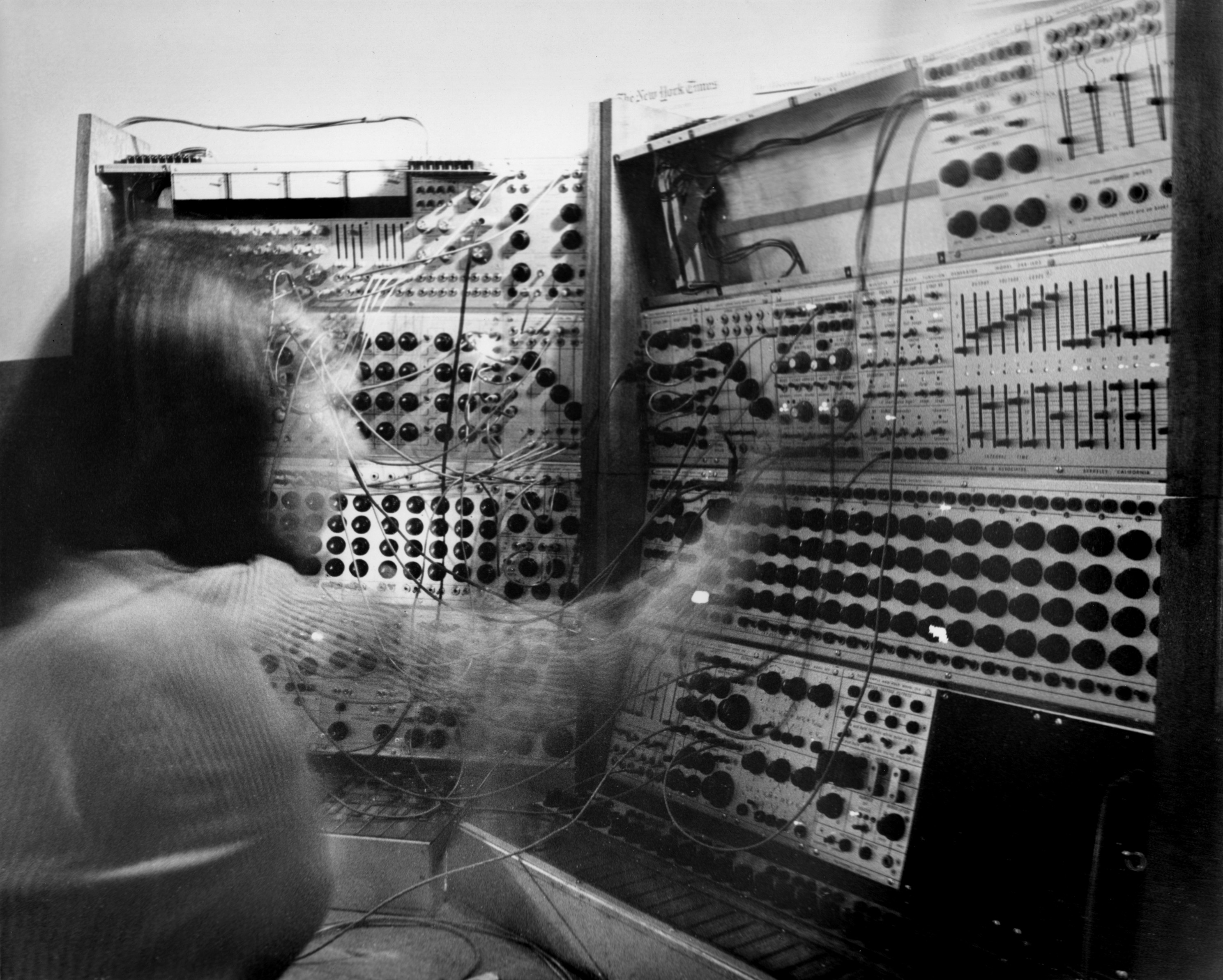
He saw the use of the standard Western piano keyboard on the MOOG as a compromise?
SC: Well, it was a compromise and Bob Moog knew that too. But back then there was a barrier to people seeing what we were doing. They say that hundreds of years ago the native people couldn’t see the ships coming to the Americas because they didn’t have a concept of what ships were. This means in order to see something you have to have a concept of it. People had no concept of electronic music back then. So even if they were sitting in front of a machine and sound was coming out of it, they still didn’t get it. So out of desperation really some of these machines were made to look familiar so people could identify them as musical. So Bob Moog put a keyboard on it and people were like, ‘Oooooh! It makes music! That’s what it’s for!’ So there was a gap between the manufacture of these things and people realising what they were for and I think Don experienced this gap much longer than most.
I know when you were younger you had a very deep connection to the Buchla 200 – to the extent that you used to talk of it as if it were a romantic partner. I was wondering if you could tell me what it was about this electronic instrument that made it the perfect form of musical machine for you.
SC: Well, for one thing it was compact. That didn’t mean as I built mine up it didn’t get really big. When I did session work in New York I was followed by a truck that moved it from studio to studio. But it is a modular system and you can design your own congregation of modules and mount them in various holders. So eventually I built up a big system. The thing I liked about it was that it had a lot of feedback because Don was trying to invent a playable, performable instrument. So there was a conversation going on between you and the instrument meaning there were a lot of lights. If an envelope was triggered, there was a light. If a certain intensity was reached, there was a light. During the transposition of a sequencer stage to a new octave there might be a blue light. He also had specific tabs for audio and control voltages. In the Moog, some of these were mixed, so you had the same quarter inch plug. The Buchla used the mini phone and banana plug and separated out the two paths. The control path was separate from the audio path. Right from the beginning Buchla knew that spatial control of sound was integral to the concept of electronic music. With a traditional instrument, if somebody was sitting on the stage in front of you it made a lot of sense for the sound to come from the direction of that person. But in electronics you could move the sound any place and you could create imaginary spaces and he had this voltage control reverb. So you could apply a controlled voltage to the amount of reverb and very quickly it would respond giving you sounds that were zooming in and away and around you. Rhythms could be created just based on the spatial location of the sound. So the movement alone was the rhythm.
Some of the tracks on the compilation are commercial pieces. As you mentioned before you had your own very successful company to do commercial work. Did you first go into to doing commercial tracks, jingles, textured sounds to raise money to buy a Buchla?
SC: [laughing] Absolutely! I was always motivated by need. I realised very quickly that doing anything creative takes so much effort that if I could make my money in the same field as my artistic endeavour it would be less of a waste of energy. So I decided to make money in music meaning I could support my music that didn’t make money. And in those days having a technology addiction was an expensive habit to have and so was doing production if you were committed to doing it at the top level. Some of the recordings on this compilation were done in my garage on a reel to reel tape recorder so those were the very early pieces when I was still a student with the beginnings of a Buchla. As time went on I built up the machine, moved to LA – because I was being hired by that point. I didn’t like LA, I moved to New York to give a live Buchla performance so I was invited there in 1974 to see the opening of a friend’s sculpture exhibition and I loved New York so much I never went back to LA. New York is so wonderful because there is so much artistic energy but you do need money to live there. I was hanging out with a lot of artists in Soho but they were visual artists and they had something to sell. They had exhibits and they had something to sell. If you were a composer or musician at that time you had nothing to sell because you couldn’t make your own records… there was nothing tangible. You could perform but that wasn’t sufficient to make a living. So that was when I went into commercials because I know that was where the money was.
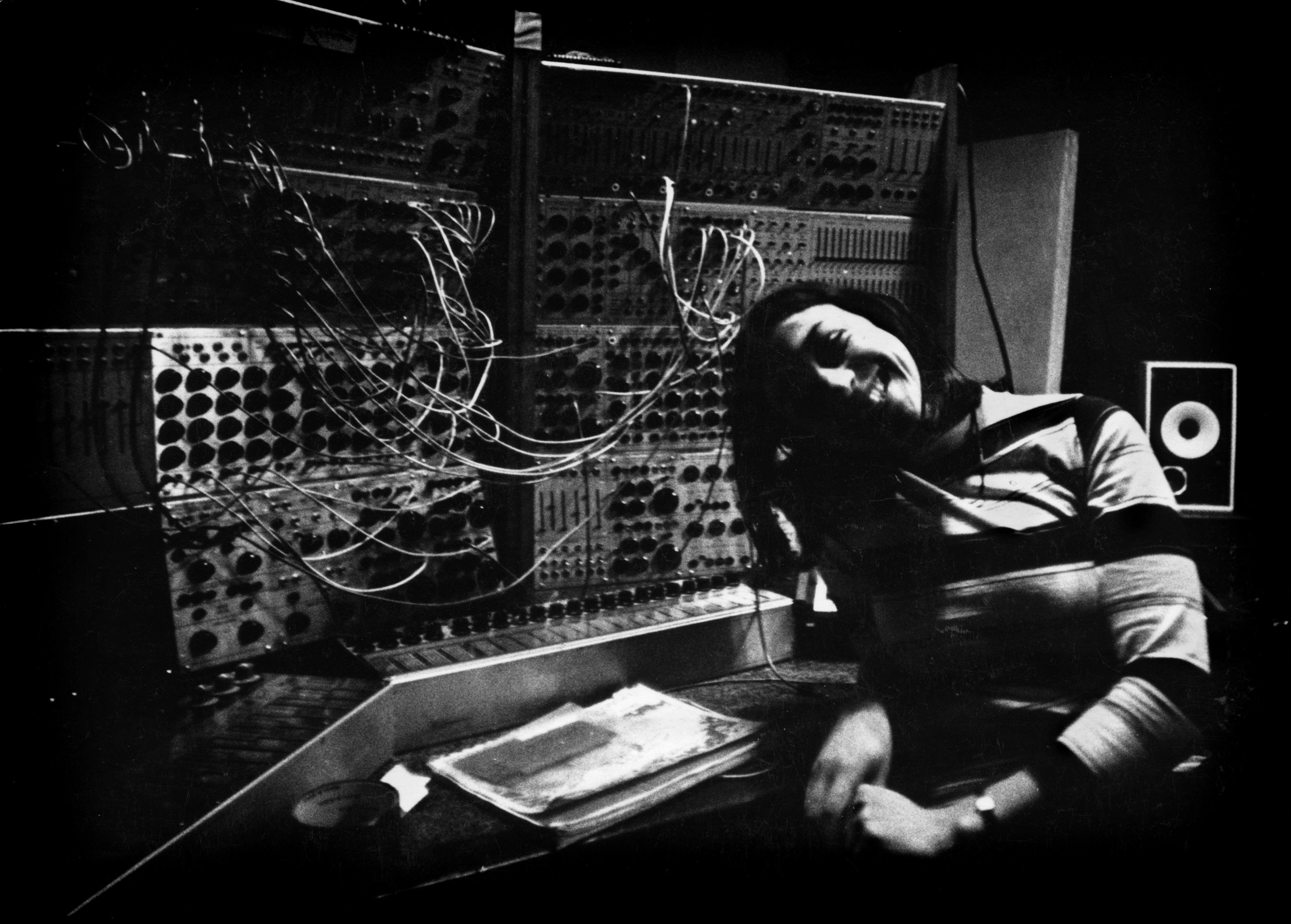
I believe you were friends with Philip Glass. But maybe he wasn’t too keen on the idea of electronic music back then. Out of the musicians you knew, who were the most open minded to what you were doing?
SC: Well, I can remember doing an evening at the loft of Phil Niblock and Vladimir Ussachevsky [early electronic musician]. I did evenings and people like Philip Glass, Dickie Landry and Steve Reich would be there. And Vladimir wrote a recommendation for me to get a grant. He saw me perform my Buchla and one photo survives from that session. Dickie Landry took it and you can see how big the Buchla was by then. Philip was open minded and I did give him lessons. We had the Buchla set up in his studio in Soho called Basement Recordings. And he would come in very… studiously. My feeling was: “You’re going to love this Philip because with this machine you can do exactly what you want. Your music is repetitive and even paced and this sequencer does that.” But, electronics really are complicated and that instrument is complicated and I had already been playing it for years by that point. Perhaps I didn’t realise how daunting it could be. Now that I’m getting back into the Buchla I have a new appreciation for it because the instrument that I’m using, the 200E, it’s like getting to know a person. The modules are alive with the different things they can do and you have to get intimate. I think this is because it’s analogue and you’re looking at it with all the controls visible, not like a computer where layers and layers of it are hidden and you don’t even know where they are. With a Buchla it’s all there but it takes time to get to know it. That time was something that a lot of people didn’t want to spend. But if you handed someone a violin and told them to play it, the chances of getting anything nice to hear is quite slim, unless you came back a long time later. It takes time.
I find it ironic really I guess, because a lot of more recent electronic musicians from Aphex Twin to Autechre to Orbital are all obviously influenced by Philip Glass and Steve Reich and that minimal style of composition would have loaned itself very comfortably to that kind of electronic instrument.
SC: Ah, the minimal style… Philip studied with Nadia Boulanger, I studied with her and I think Steve was going to. The routes of composing in those days were European and there had been a revolution in academic study of composition, starting in about 1910. This went on and on becoming more and more complicated. You could probably compare it to abstract art when painters stopped representing reality and started doing something unconnected instead. Music got disconnected from its emotional roots in many ways. Academics would write music based on complexity and it would be more about playing in 11/15 than playing anything recognisable. It got really challenging and noisy. So there was a rebellion. And Philip was part of it. And so was Steve. And so was I. But they were a little bit ahead of me. And the rebellion was, ‘Wait a minute! We don’t have to keep on getting more and more complicated, showing off more and more about how difficult our music is.’ I came to this decision via the Buchla and my experiences in electronic music because I could see that making music with a machine was simple. There was no problem if you wanted to play music in 11/15. You simply told your machine to do that. It didn’t cause sweat on your brow or prove anything. So there was a revolution in simplicity that was in the air then and I think that was part authored by electronic music because chaos had become easy. Difficulty had become easy and therefore that wasn’t a frontier anymore. This meant we might as well look at easy. Philip did patterns that were eight notes that went on and repeated. Steve was perhaps a little bit more romantic and less abstract. Both were wonderful composers. And I was there doing my electronic music. They were a little bit ahead of me, I always felt I got there a little late and they were already there in New York and I arrived in 1974. But you know there was a lot of sponsorship via Europe. A lot of musicians would be invited to play in Berlin where there was government sponsorship and support of the arts. There was a little bit of support of the arts here. I got grants from the Ford Foundation and the Rockerfeller Foundation. Very little ones but they helped.
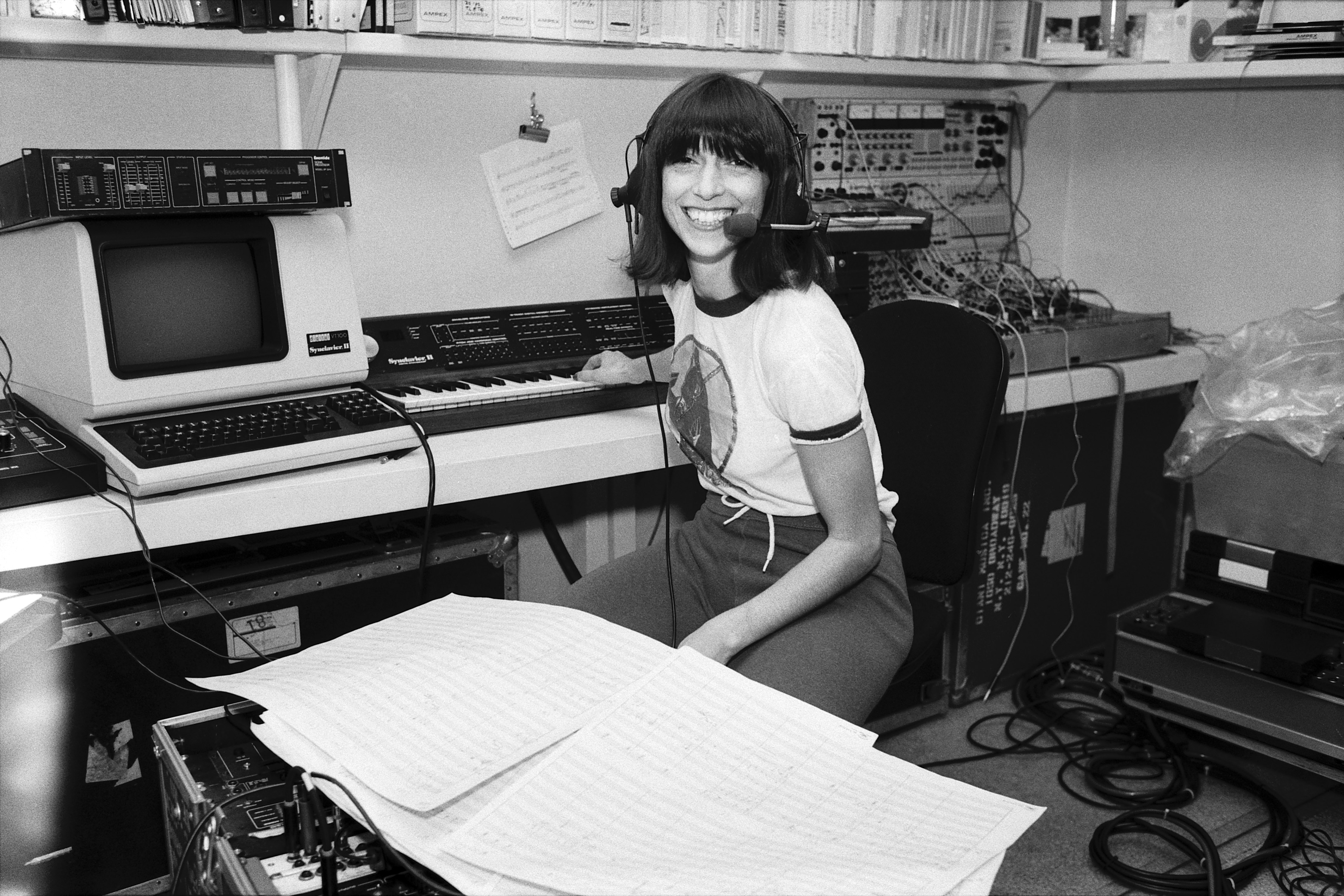
You have a reputation that precedes you of a knack for being able to analyse sounds mentally. To break them apart in your head, understand the components and then to reproduce them using machines. Is this something that is intuitive to you or is it something that you find easy to explain?
SC: Well when you’re working in electronics your ear is always necessary; you’re tuning the instruments for starters because they were always going out of tune. There are many ways of making a sound. There is added synthesis and multiplication synthesis and your ear starts to think in terms of the different parameters you are controlling. So you can look at the sound in terms of parameters: the volume, the pitch, the timbre, the harmonic content, the attack, the delay… you start to hear it in its elements so if you need to reproduce it, you know what to do. I don’t think you can separate those things. I don’t think you can work in electronic music without having an ear that can analyse what is going on in a sound. This is part of the problem with the newer generation who use samplers. They are given a palette of sounds that are already stuck so they never learn to alter those sounds. This is another reason for coming back to analogue. The kids want to have control. There is pleasure in turning that knob and hearing the filter sweep. These things are wonderful. The instrument gives you feedback which is instantaneous. You turn a knob and you hear what happens. And that’s great. The lights give you constant feedback. If you were doing computer music in the old days when you had to design a sound you would have a card that would have to be punched and sent off. It would come back the next day and you would have to pick up the audio tape of the sound that you had generated. That was a much slower learning curve because you didn’t have feedback on your sound right away. Early computer music taught us to be really aware of what we were asking the machine to do because you wanted the sound to come out the way you imagined it.
Obviously there is a big dividing line between your commercial and artistic work. Your own albums such as The Velocity Of Love and Seven Waves have become collector’s items now. When you were working on them were you thinking in the same terms as you were when you were doing composition or were you thinking more in the terms of pop music? What were you trying to achieve with them?
SC: I think I arrived at my voice with Seven Waves and The Velocity Of Love. They represent my arrival artistically. The path did come through electronic music but it combined with my classical roots. When I had to perform electronic music no one understood it and I always thought back then, ‘Be patient, take your time, people need to learn about it, and when they’ve learned about it they will develop an ear for it.’ So I thought my job was to educate people about this world of electronic music, that it existed, that you could listen to it. It was exhausting for me actually because nobody knew what this thing was. I got very frustrated with that because over the years the situation really didn’t seem to improve that much. There were always more people who didn’t understand it than did understand it. By the time my first album arrived it was a combination of electronics and my classical roots which I felt were very Italian and had to do with melody. My grandfather was blind for his last five years and all he would do was sit and listen to opera and I would sit with him so I think I got his sense of melody. The other thing which was critical for my style was I could play more slowly than on a piano. On a normal piece if you played it on a piano you had to connect the notes at a certain speed, with electronics you could immediately go half as slow. You could create an energy force which wasn’t dependent on your fingers creating notes, the machine could create these long swathes of sound. So my voice was really a combination of the specific things that electronics could do and my melodic DNA. Seven Waves was about this and my love for the ocean. Those seven waves were all connected in one piece. There is not a seam on that album. A wave builds, it crashes, it recedes, another wave builds out of the sea… And the shape of the pieces was that of a wave and the compositional structure I thought was very feminine. It was a very long slow arc rather than something rhythmically pounding in your face consistently. For me electronics were sensual because you could do slow things.
For the last twenty years you’ve been working on piano pieces but you just said you’re in the process of getting a new Buchla.
SC: [laughs] You know, this surprises me more than anybody but after 20 years in New York I landed back in the Bay Area and over the years I’ve developed a new relationship with Don Buchla. It’s a different relationship as we’re mostly tennis buddies. We both love tennis and I’ve been out here for 20 years and I never thought about getting back into the Buchla. But he loaned me one for a while and I thought, ‘I don’t know…’ Because the first time round it took over my life completely and I don’t know if you can play it without having it take over your life. So I’m a little scared but also intrigued. I’m a little shy about trying to do it again because I care a lot about it. I’m not just going to go up to it and make some noise. I really want to get to know it. So, we’ll see what happens…
Well, I hope if you make some more music with it, you’ll let us know, as we’d love to hear it.
Lixiviation is out now on Finders Keepers

